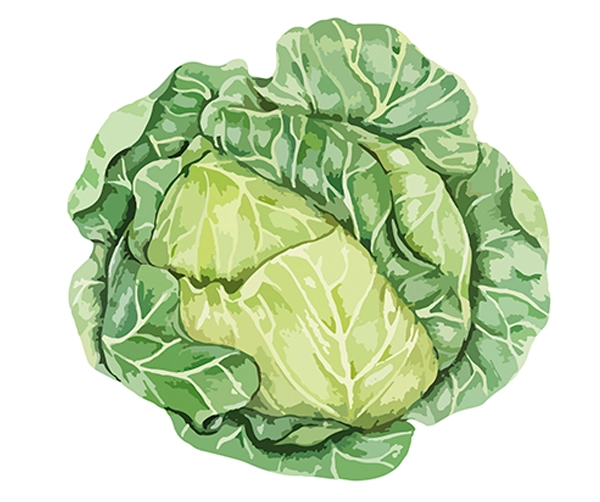Serving Tips
Cabbage can be prepared in many ways, making it a highly adaptable ingredient. For raw applications, shredded cabbage is perfect in salads, slaws, or wraps. It adds crunch and volume without overpowering the dish, and it pairs well with carrots, apples, and citrus-based dressings.
For a quick side dish, sauté sliced cabbage in olive oil with garlic and onions until tender. You can also add cabbage to stir-fries, soups, and stews to increase texture and nutritional value.
Roasting cabbage brings out a natural sweetness. Slice into wedges, drizzle with oil, season with salt and pepper, and roast at 400°F until browned and tender.
Boiled or steamed cabbage can be used in traditional dishes such as stuffed cabbage rolls or added to mashed potatoes for a comforting, fiber-rich side.
Cabbage is also commonly used in fermented foods such as sauerkraut and kimchi, which offer the added benefit of probiotics to support gut health.
Serving Tips
Cabbage can be prepared in many ways, making it a highly adaptable ingredient. For raw applications, shredded cabbage is perfect in salads, slaws, or wraps. It adds crunch and volume without overpowering the dish, and it pairs well with carrots, apples, and citrus-based dressings.
For a quick side dish, sauté sliced cabbage in olive oil with garlic and onions until tender. You can also add cabbage to stir-fries, soups, and stews to increase texture and nutritional value.
Roasting cabbage brings out a natural sweetness. Slice into wedges, drizzle with oil, season with salt and pepper, and roast at 400°F until browned and tender.
Boiled or steamed cabbage can be used in traditional dishes such as stuffed cabbage rolls or added to mashed potatoes for a comforting, fiber-rich side.
Cabbage is also commonly used in fermented foods such as sauerkraut and kimchi, which offer the added benefit of probiotics to support gut health.
Health Suggestions
Cabbage fits well into a variety of meal plans, from plant-based diets to low-carb approaches. Its high fiber content supports regular digestion and can help with appetite control. To retain the most nutrients, consider lightly steaming or sautéing rather than boiling for long periods.
Pair cabbage with lean proteins like beans, tofu, or chicken for a balanced meal. When using cabbage in slaws or salads, choose light dressings made with vinegar or lemon juice instead of creamy, high-fat options.
At Benefit Market, cabbage is an affordable, nutrient-dense vegetable that delivers both flavor and function. Whether raw or cooked, it’s a practical choice for building satisfying, health-conscious meals every day.
Get Weekly Updates

















